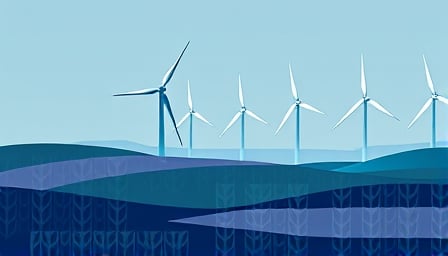Corporate News – Entergy Corp
Entergy Corp’s latest trading session reflected a modest rise in its share price, indicating continued confidence among investors. While the daily movement is small, the company’s trajectory over the past five years demonstrates significant capital appreciation, a trend that aligns with its expanding market capitalization.
Beyond the price action, Entergy’s strategic focus on community development, sustainability, and renewable energy integration underscores a long‑term value proposition that extends beyond immediate financial metrics.
Power Generation, Transmission, and Distribution Dynamics
Entergy operates a diversified generation mix that includes coal, nuclear, natural gas, and an expanding portfolio of renewable resources such as wind and solar. The utility’s grid is designed to balance the variability of renewables with the reliability demands of its customer base. Key technical considerations include:
- Grid Stability: The integration of intermittent sources requires advanced control systems—such as automatic generation control (AGC) and flexible AC transmission system (FACTS) devices—to maintain frequency and voltage within strict bounds.
- Demand Response: Entergy’s smart grid initiatives enable real‑time load shifting, reducing peak demand and easing stress on the transmission network.
- Infrastructure Aging: Over 70 % of the company’s transmission lines were built before 1990, necessitating targeted upgrades to mitigate bottlenecks and improve fault tolerance.
Renewable Energy Integration Challenges
The Gulf South region, where Entergy has a substantial footprint, offers high wind and solar potential. However, several engineering challenges arise:
- Curtailment Risk: Grid operators must manage excess generation that exceeds transmission capacity, leading to curtailment and lost revenue opportunities.
- Voltage Regulation: Distributed solar farms can cause voltage rise issues, requiring installation of voltage regulators and inverter-based controls.
- Resilience to Weather Events: Hurricanes and severe storms threaten both generation assets and the transmission infrastructure, demanding robust grid architecture and rapid restoration protocols.
Entergy’s recent investments in 500 kV backbone upgrades and high‑capacity substations aim to accommodate projected renewable penetration levels of 30 % by 2030.
Infrastructure Investment Requirements
Achieving a resilient, renewable‑friendly grid entails substantial capital outlays:
- Transmission Upgrades: Estimated $2–3 B over the next decade for new lines and reinforcement of existing corridors.
- Substation Modernization: Approximately $1.5 B to replace legacy equipment with digital protective relays and SCADA integration.
- Energy Storage: $1 B in battery and pumped‑storage projects to provide frequency regulation and peak shaving.
These investments are financed through a mix of rate‑based revenue and strategic capital markets activity. Entergy has structured its long‑term debt to align with anticipated rate increases driven by the renewable integration roadmap.
Regulatory Framework and Rate Structures
The utility’s regulatory environment is governed by the Public Service Commission of Louisiana (LSPSC) and the Tennessee Valley Authority (TVA) jurisdiction for certain interconnections. Key regulatory influences include:
- Rate Design: Entergy employs a time‑of‑use (TOU) tariff, which encourages demand shifting away from peak periods, reducing the need for costly peaking plants.
- Renewable Portfolio Standards (RPS): Louisiana’s RPS mandates a 15 % renewable generation mix by 2025, pushing the company to accelerate renewable procurement.
- Reimbursement Policies: The utility receives cost‑of‑service rebates for grid upgrades that enhance reliability, offsetting capital expenditures.
Regulators have recently approved a rate increase of 0.5 % to fund the 500 kV upgrades, citing the necessity for grid reliability and renewable integration.
Economic Impacts of Utility Modernization
From an economic perspective, Entergy’s modernization strategy yields both direct and indirect benefits:
- Direct Costs: Capital expenditures translate into higher short‑term rates; however, these are amortized over the lifespan of the assets, spreading the cost burden.
- Indirect Benefits: Improved reliability reduces outage costs (estimated at $30–$40 k per customer per outage) and enhances business continuity for commercial customers.
- Employment: Infrastructure projects create seasonal and permanent jobs, fostering local economic development—a key component of Entergy’s community outreach programs.
In the long run, the investment in grid resilience and renewable integration positions Entergy to capture future market opportunities, including ancillary services revenue from frequency regulation and voltage support.
Conclusion
Entergy Corp’s recent stock performance, coupled with its robust capital growth over five years, reflects investor confidence in its strategic direction. The company’s technical initiatives—upgrading transmission infrastructure, integrating renewable resources, and embracing modern rate designs—are critical for maintaining grid stability and supporting the broader energy transition. Regulatory support, combined with disciplined investment, ensures that Entergy can deliver reliable service while advancing its sustainability commitments, thereby sustaining shareholder value and community prosperity.
